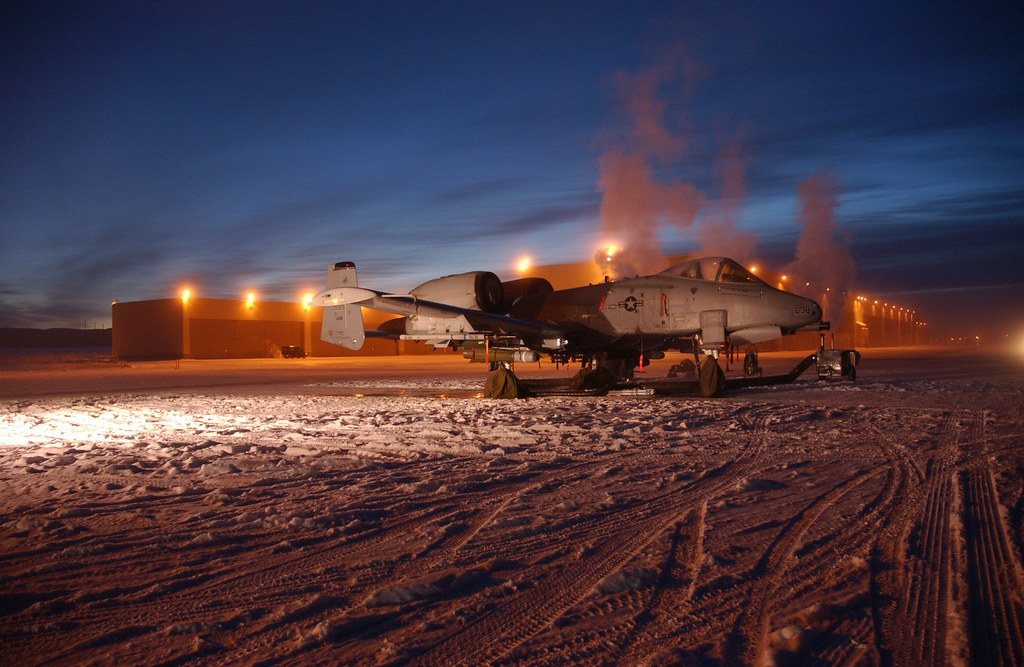
The A-10 Thunderbolt II and the F-111 Aardvark—two aircraft that carved unique niches in military aviation history—are symbols of resilience and versatility.

The A-10, often known as the “Warthog,” and the F-111, dubbed the “Aardvark,” have captivated military tech and politics enthusiasts for decades with their unconventional design philosophies and their remarkable abilities to survive and thrive in an ever-changing battlefield.

The A-10, with its infamous GAU-8 30 mm rotary cannon, remains a testament to close air support excellence. Jack Stitzel, involved in the A-10’s development, reminisces with a hint of pride, “Regardless of stealthy aircraft that we may build or Mach 2+ aircraft – we are still going to have that mission area where… you have got to fly an airplane down and dirty and get in close and slug it out. And the A-10, bless its socks, was built to do that. It does it very well. So, I think it’s going to be around for quite some time.”

This sentiment resonates with the experiences of pilots like Kim Campbell, who successfully landed her A-10 using manual controls after taking heavy fire in Iraq in 2007.

Campbell’s words, “I think it was more amazement that an A-10 could take a hit like that. The airplane was designed to do that, but to see it real world and to know that you can take those hits and still make it home is amazing. It’s a true testament to the A-10,” capture the aircraft’s rugged charm and battlefield prowess.

The A-10 can carry various ordnance types such as rockets, missiles, and bombs. In Operation Desert Storm in 1991, A-10s were armed with maverick anti-armour missiles to target armor.

The aircraft was designed to engage and eliminate tanks in European forests, but many pilots preferred using the aircraft’s cannon for its safety and ease of use.

The F-111 Aardvark, though no longer in service, played a critical role as a multi-role strike aircraft. Developed amidst controversy and challenges, it nevertheless showcased groundbreaking features like terrain-following radar and variable-geometry wings.

The F-111 could fly at an altitude of 200 feet above ground level in varying terrain without pilot intervention thanks to its radar system. The system permitted the pilot to adjust the aircraft’s position while the altitude was controlled by radar.

The Aardvark became a linchpin in U.S. air operations, with its massive payload capacity and impressive speed. Notably, it played a crucial role in Operation Desert Storm, flying over 2,400 sorties against Iraqi targets.

Eighteen aircraft and four EF-111A Raven electronic warfare variants were deployed for the April 14, 1986, “Operation El Dorado Canyon” airstrikes on Libya. Departing from Royal Air Force Lakenheath and Royal Air Force Upper Heyford in the United Kingdom, they flew a round-trip totaling 6,400 miles to Libya, making it the longest fighter combat mission in history, lasting 13 hours.

A total of 566 F-111s were built across all series; 106 of these were production F-111Fs. The United States Air Force phased out the final F-111F in 1996.

It’s a story of innovation and persistence—two traits admired by military history and tech aficionados. The F-111’s legacy is complex, with its eventual replacement by aircraft like the F-15E Strike Eagle, but its impact on military aviation can’t be overstated.

The US Army has been a strong supporter of the A-10, highlighting its effectiveness in safeguarding their troops, particularly as the US Air Force has questioned its operational expenses. After the A-10 was modernized in 2007, the US Air Force projected that it would continue to be utilized until 2028, at which point it would be succeeded by the F-35 Lightning II.

Both aircraft have faced their share of scrutiny and calls for retirement. Despite this, they have proven their worth through years of dedicated service. The A-10, particularly, still flies, its cannon roaring in defense of troops on the ground, as military analysts suggest its capabilities will remain relevant as long as ground forces are deployed.
Relevant articles:
– Why the A-10 is still so popular, iwm.org.uk
– The F-111 Aardvark Was a Much Better Ground Strike Jet Than the A-10, Let Us Prove It, autoevolution
– F-111: The Aardvark Was America’s Best Strike Aircraft (Ever?), The National Interest
– Why Was The F-111 Aardvark Retired?, SlashGear

